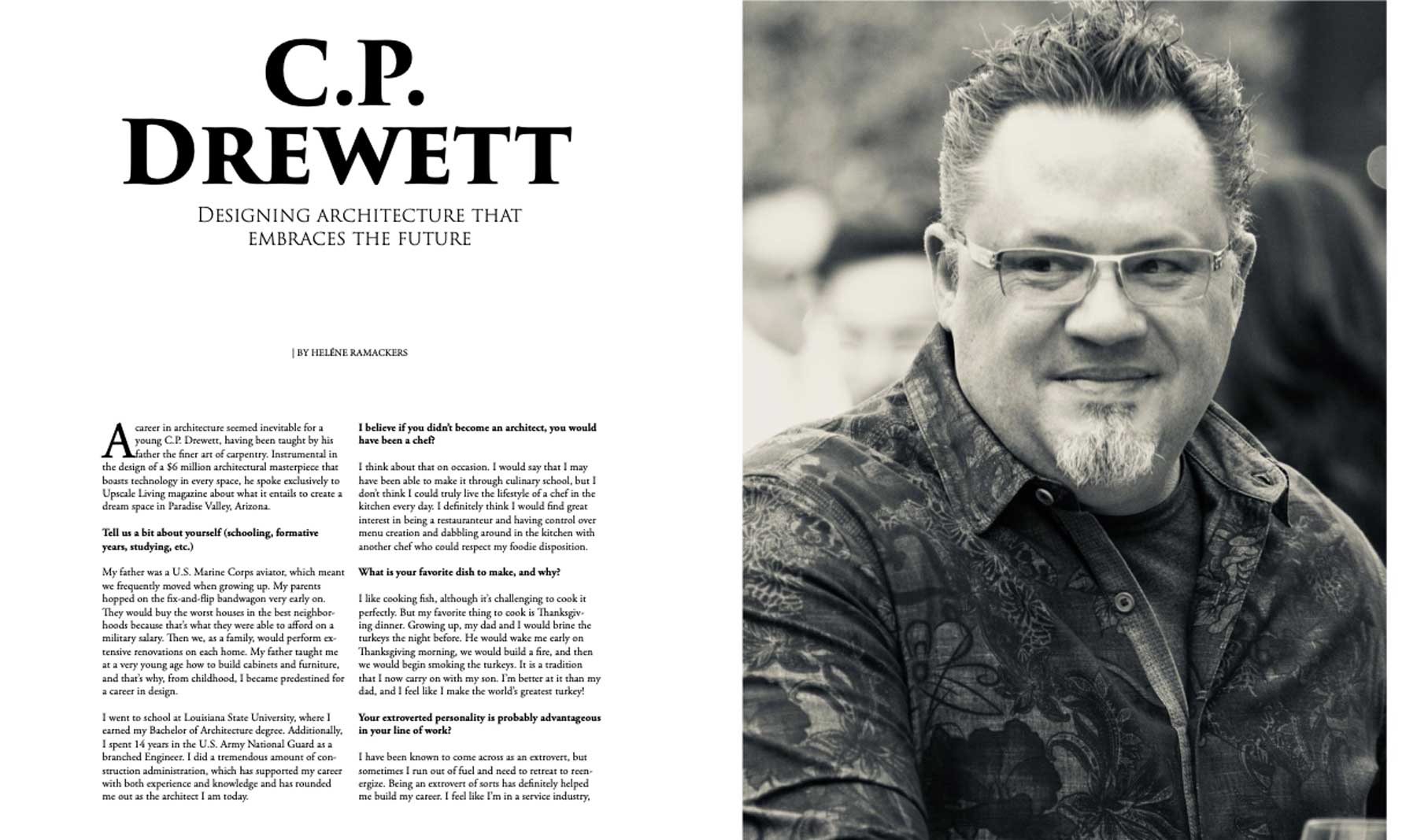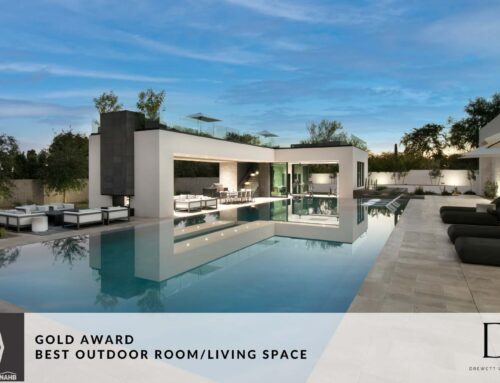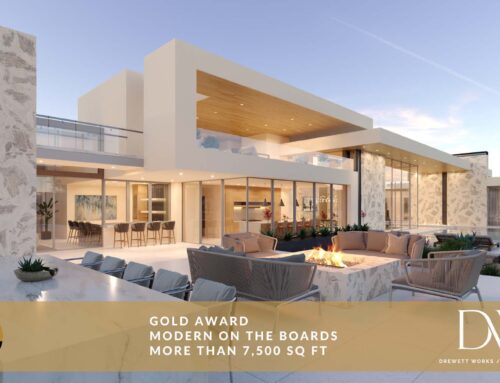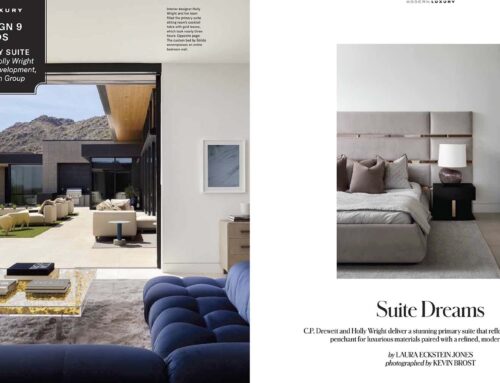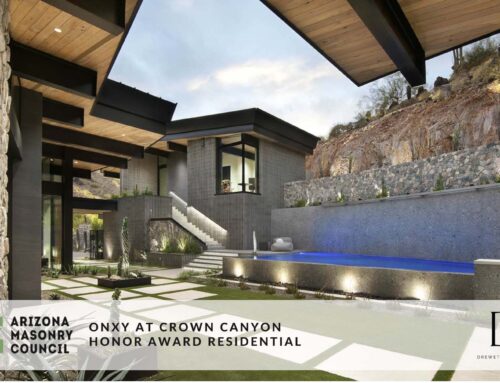Following the the launch of Iconic Haus — Lot 4 of the eleven Cameldale Estates properties designed by architect C.P. Drewett — this feature article from luxury lifestyle magazine Upscale Living was a nice exclamation point! We are thankful for and humbled by the attention. Enjoy the article!
C.P. Drewett
Designing Architecture That Embraces The Future
Written by Helene Ramackers
A career in architecture seemed inevitable for a young C.P. Drewett, having been taught by his father the finer art of carpentry. Instrumental in the design of a $6 million architectural masterpiece that boasts technology in every space, he spoke exclusively to Upscale Living magazine about what it entails to create a dream space in Paradise Valley, Arizona.
Tell us a bit about yourself (schooling, formative years, studying, etc.)
My father was a U.S. Marine Corps aviator, which meant we frequently moved when growing up. My parents hopped on the fix-and-flip bandwagon very early on. They would buy the worst houses in the best neighborhoods because that’s what they were able to afford on a military salary. Then we, as a family, would perform extensive renovations on each home. My father taught me at a very young age how to build cabinets and furniture, and that’s why, from childhood, I became predestined for a career in design.
I went to school at Louisiana State University, where I earned my Bachelor of Architecture degree. Additionally, I spent 14 years in the U.S. Army National Guard as a branched Engineer. I did a tremendous amount of construction administration, which has supported my career with both experience and knowledge and has rounded me out as the architect I am today.
I believe if you didn’t become an architect, you should have been a chef?
I think about that on occasion. I would say that I may have been able to make it through culinary school, but I don’t think I could truly live the lifestyle of a chef in the kitchen every day. I definitely think I would find great interest in being a restauranteur and having control over menu creation and dabbling around in the kitchen with another chef who could respect my foodie disposition.
What is your favorite dish to make, and why?
I like cooking fish, although it’s challenging to cook it perfectly. But my favorite thing to cook is Thanksgiving dinner. Growing up, my dad and I would brine the turkeys the night before. He would wake me early on Thanksgiving morning, we would build a fire, and then we would begin smoking the turkeys. It is a tradition that I now carry on with my son. I’m better at it than my dad, and I feel like I make the world’s greatest turkey!
Your extroverted personality is probably advantageous in your line of work?
I have been known to come across as an extrovert, but sometimes I run out of fuel and need to retreat to reenergize. Being an extrovert of sorts has definitely helped me build my career. I feel like I’m in a service industry, although many other architects don’t agree with that perspective. I’m here to serve my client, and they never feel like strangers to me, not even at the beginning of our relationship. The use of humor, humility, and kind words really helps break down the walls with a new client so that I can get to know them and their preferences on a more personal level.
You designed the stunning ICONIC HAUS in Paradise Valley, Arizona. Please talk us through the project.
I’ve been going through a white box study during the last seven years, and this I say fourth in that series. It takes a great amount of discipline to be that restrained. On this particular project, I took notes of inspiration from Luis Barragan’s work. I’ve wanted to do this styling of a home almost my whole career…simplistic, austere, a singular note yet open and dynamic. The house is built on a series of clustered pavilions that are connected with a wood bridge and glass circulation space.
One of the things that architects need to do in this day and age is to truly integrate technology into our designs. I embrace technology and spend a great amount of time with our partners in the audio/video industry, learning and experiencing their lineup of products. I don’t want to hide technology but rather implement it logically while keeping it front and center so that it’s easier to use and navigate. I want it to be designed into the structure of the home, as a beautiful detail rather than just a plate stuck on a wall. Technology should be considered from the beginning of the design, not as an afterthought. Crestron has been great to work with because their products are built for the future of the home, and they can become beautiful details in modern homes.
The house is a modern wonder of technology with the integration of at-the-press-of-a-button marvels. How intricate is that process?
Integrating technology into design takes great coordination, forethought, and a true understanding of how we live with technology. It’s a very intricate process. Over the years, I’ve had open and candid conversations with Crestron regarding what could be improved in their product lineup.
What they’ve brought to the market within the last year is remarkably more elegant and tangential to modern architecture. They are always working to improve their portfolio, and there is no complacency with their product line.
What was it like to work with 19 design teams?
Renee Dee, the publisher of ICONIC LIFE and the brains behind the ICONIC HAUS project, was kind enough to coordinate a kick-off event with all the participating designers at my design studio. I was able to convey where the design concept came from and what was important to me. I reflected on past showcase homes I’ve been a part of. These types of events are a great opportunity for designers to make a big splash, but I asked them to practice restraint and respond to the architecture when developing their design vision. It was a great turnout. We have a wonderful design community in Phoenix, filled with talent and mutual respect. Of course, there’s always competition, but everyone played well in the sandbox together for this project. Renee’s direction and unique capacity to assemble this kind of event deserve all the credit for success.
Modern Day Renaissance Man?
I put aside classic male biases. I hunt. I fish. I sing. I cook. I design. I learn and develop as many different traits as possible.
What does C.P. stand for?
Clyde Patrick. I’m actually Clyde Patrick Drewett, Jr., named for my father, who was the senior and went by the name Pat. My parents opted to call me C.P. We jokingly make up lots of names for C.P. within my family and group of close friends. When I had babies at home, a good friend gave me the moniker “Changing Pampers,” and my wife affectionately says it stands for “Cool Person.”
I see you’ve traveled for work and hopefully, for pleasure too. Which places have left a lasting impression, and why?
Loreto, Mexico, left a lasting impression on me. I really did not know what to expect when I traveled there. I researched on the history of the city but not the geological landforms before my visit. I was dumbfounded by the land’s beauty and the proliferation of sea life. It was the first time I had been to a smaller city in Mexico. The pride of ownership and the civic nature of the residents was beyond charming.
Any exciting projects on the horizon?
The Riviera at Lake Havasu is a marina project I’m currently working on. Years ago, the town was known for its raucous Spring Break crowds, but they also have a huge boating community, majestic mountains, a massive and stunning lake, and London Bridge, too. Crestron will be providing a concierge service to all the residents for whom I’m designing homes at The Riviera. It’s a really exciting development and will probably provide us with ten years of work.
To enjoy the entire magazine, click the link below.

